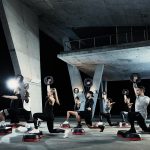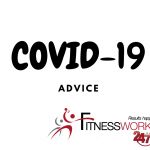WARNING: THESE SHOES WILL SABOTAGE YOUR WORKOUTS
By Bryce Hastings for Fit Planet
Let me share a simple injury prevention tip – you cannot wear high heels for prolonged periods and then expect to be able to perform squats and impact exercises without serious implications
Many years ago foot binding was a popular way for Chinese women to demonstrate their upper class status in society. They would bind their feet to make them smaller, which also eliminated their ability to walk properly. Apparently tottering around the streets of China was considered a status symbol.
These days the concept seems barbaric, yet few women realize that wearing high heels isn’t much better! Walking on your forefoot with your toes wedged into a spear point is, in my view, the modern version of foot binding.
Aside from the comfort issue, the real problem with high heels is born from the fact that our muscles are really adaptable. Put them in a shortened position for a sustained period of time and they will structurally shorten; put them in a lengthened position for a sustained period of time and they will structurally lengthen.
High heels structurally shorten your calf muscles. While this may provide a sexy definition to your calves and make your legs look longer while you’re wearing them, when you take them off your calf muscles will want to stay in this short position. The longer you wear them, the more severe the shortening.
When you have shortened calf muscles and force them into a stretched position by running, doing impact exercise or performing squats, it will be problematic.
Running and squatting requires ‘dorsiflexion’ at the ankle – this occurs as your knee pushes forward over your toes when your foot is flat on the floor. This motion is normally controlled by the calf muscles.
Shortening your calves for sustained periods of time will result in this movement becoming increasingly difficult. You can end up with increased calf and Achilles strain when running, and it will drastically alter your squat action.
Restricted calf action compromises the heel-roll-toe-off action when running. The calves can’t elongate to allow your body weight to translate forward over your foot resulting in the all too common runner’s calf tear.
Squats require simultaneous motion at the hip, knee and ankle. Take one of these out of the equation (in this case the ankle due to the calf shortening) and something else has to move more to keep the action going. This usually occurs at the hip – resulting in the trunk tipping excessively forward, which puts more strain on the lower back.
Can stretching solve the issue?
If you think you can simply do a few quick stretches before you run or squat, think again. Prolonged shortening would require prolonged lengthening to reverse the effect. So unless you’re someone who regularly stretches their calves for a few hours each day, your stretches will probably be a waste of time.
The only answer is to remind yourself that you can’t have your cake and eat it too – wearing high heels may be great for appearances, but don’t expect it to go well with exercise.
While long periods with your heels raised is not a good idea, spending a few minutes focusing on heel lifts can be very beneficial. Dr Jinger Gottschall explains how adding a couple of inches of air under your heels can help your run faster and jump higher here.
Bryce Hastings is a leading New Zealand physiotherapist and fitness expert. As Les Mills Head of Research he leads research into the most effective approaches to exercise and plays a pivotal role in structuring all LES MILLS™ workouts. Bryce’s passion for effective exercise is born from spending 30 years in physiotherapy, where he saw “people getting their lives wrong” every day and felt like he was acting as an ambulance at the bottom of the cliff. By working in fitness he gets to be the fence at the top.
This piece originally appeared on https://www.lesmills.com/fit-planet/health/high-heels-and-exercise/






